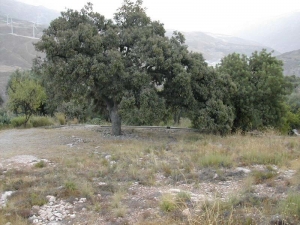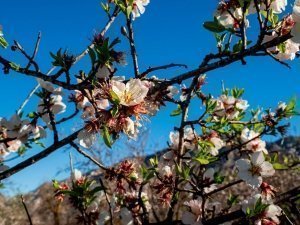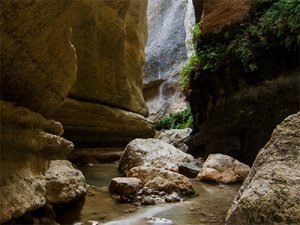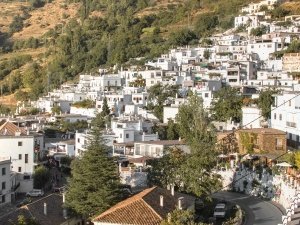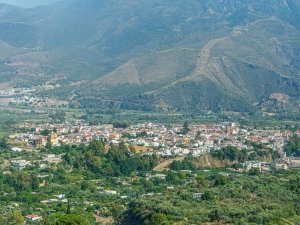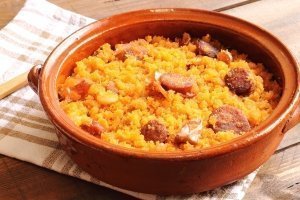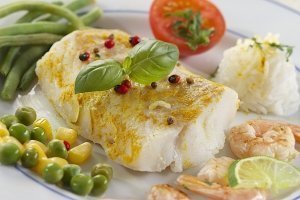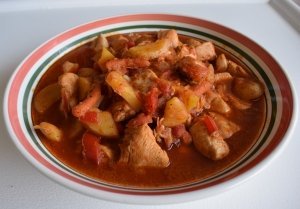Enviroment
- Home
- Enviroment
Comarca El Valle de Lecrín
The Lecrin Valley occupies a privileged position, one of the treasures of the province bordered by the Vega de Granada to the north, the Sierra Nevada and Alpujarras to the East, the Costa Trpoical to the south and the Temple to the West.
Climatically it is protected by the Sierra Nevada from the cold winds from the North.
Geographically its position is enviable and unequalled, and is a place to stay in and relax, or to use as a stepping off point for all that the province of Granada has to offer, from Malaga to Almeria.
Its strategic situation offers many places of interest which can be got to in a manner on minutes, within very few kilometres on good roads. Places to see are the snows of the Sierra Nevada ski station and the exotic fruits of the Costa Tropical.
It has very easy access by way of the N-323 motorway and the A-4, which connect Granada city with the Costa Tropical, or the N-340 which connect malaga and Almeria with Granada. The area has much to offer tourists and visitors, excellent walking, local artisans and tapas bars. The locals are open and freindly and like the fact that their villages are attracting visitors from other lands. The local councils are always trying to improve things but are very concious of their culture and history.
After the countryside, water is one of the apects of major interest. The lagoon in Padul, the Rio Durcal or the nartural springs of Albuñuelas. The walking is very good in the area and it is a strategic jumping off point for routes such as the GR-7 which runs from Athens to Tarifa, as well as the Sulayr in the Sierra Nevada. Also there is the “Route of the Mills” which shows the importance given to these historic sites which for years had been abandoned but now are being restored and provide an attractive addition to the Valley.
As you travel through the Valley you will see many signs for places of interest, such as Roman or Arab baths, ruined castles, ancient olive mills or churches of interest.
Of course, there are various pamphlets and other literature which can be picked up from ur office to help you enjoy the area.
History
Historically the Lecrin Valley has always been a place that had to passed through on the way from the capital to the coast or the Alpujarras, but the communications have become much simpler since the beginning of the 20th century.
The area has been populated since Paleolithic times and has been the site of famous battles like that of the Puente Tablate in the 8th century with the Alpujarran Visigoths holding the Islamic invaders; that of Velez in 823AD where Abdulrahman II massacred the Christian Mozarabe population and again in Puente Tablate in 1566 during the war against the Moors, when the Christians confined the Moorish resistance to the eastern Alpujarras.
The Lecrin Valley has many archaeological remains and monuments. There are Paleolithic and Neolithic remains in caves close to Cozvijar and in Durcal. Iberico remains in Padul, and Iberico remains in Padul, Cozvíjar, Murchas and Vélez.
There are Roman remains in Padul (quarries for mill-stones, etc) Conchar (aquaduct, roads), Murchas (fortified houses and aquaduct, Tablate, (road), Restabal, Velez and Durcal (sites where there are fountains). In Mondujar they have recently discovered a Roman baths with elaborate mosaics.
But the Lecrin Valley is really know for its Moslim past, as attested by the numerous remains from this epoch, even if they haven´t been as well preserved as they could have been.
During the Islamic domination there appear references to Al Iqlim (a district or zone ands from which is derived the name Lecrin”) This was an area of small agricultural villages protected by fortifications such as the castles at Murchas, Mondujar and Restabal; the Bayo tower in Albuñuelas and the watchtowers of Conchar and Marchal.
But without doubt the most important event of this epoch was the agricultural revolution which saw the creation of acequias for irrigatio and the terracing of land to improve the yield. The acequias of this time are authentic engineering works, using the minimum inclination possible to allow the water to be moved over long distances and thereby allowing the land of the vega and the valleys to be irrigated. The original system still functions to this day.
Villages of Lecrín Valley
Today the agriculture of the countryside is well preserved and maintains much of the traditional crops (citrus, almonds and olives) and continues to use the network of acequias an roads, at times of Roman origen but mostly medieval with some modern adoptations.
After the arrival of the Christians, the Valley was the setting for rebellions of the Moriscos that moved to the Alpujarras under the command of such as Ibn Hamaya who held the road from Granada as far as Padul.
Don Juan of Austria destroyed the last attempts of the Moriscos to retake Granada. From this time we have tradfitions such as the arcabuceros of Beznar, or the numerous followers of San Sebastian in many villages. Tras la expulsión definitiva de los moriscos, el Valle sufre una despoblación severa de la que tardará siglos en recuperarse.
The mosques were recycled as churches (the church of Chite still has a minaret nearly wholly intact) and Mudejar chruches began to appear in the Valley, but the land remained virtually unchanged.
On Christmas Day of 1884 an earthquake struck the valley and destroyed a great number of houses. Particularly affected were Murchas and Albuñuelas, where ou can still se some houses with damage sustained as a consequence of the quake.
At the beginning of the 20th century the problem of commucication between Granada and the coast began to be solved. The road was repaired, the tram from Durcal, the longest cable car in Europe joining Durcal with the port of Motril. A certain tissue begins to emerge.
Now, after depopulation of the Valley in the 1960’s and 70’s caused by workers from the Valley emigrating to look for work, many of those workers have returned to the villages, but the smallest villages have been in serious danger of disappearing. (In fact, Tablate is now a phantom village and its church has been bricked up.)
Thanks to careful preservation many villages retain the charm of the old way of life. Try a walk through the lower barrio of Albuñuelas or through Saleres or Izbor to step back in time 50 years, and see streets that were constructed for the transit of animals and people and not for mechanical vehicles. A walk through the slum of Albuñuelas, Saleres or Ízbor is enough to go back 50 years in time, see streets that were designed for the transit of people and work animals, and not for mechanical vehicles.
Gastronomy
The food of the Lecrin Valley is an excellent example of Mediterranean cooking; wheat semolina, kid with garlic, stews, soups, beans with cod, and a variety of sweet desserts.
More localized dishes are: marranero stew, crab casserole, pipirrana, country rabbit and goat cheese in Albuñuelas; pestiños in Béznar and in Vélez.
Among all the dishes, two widespread in the area stand out, the soak and the fennel stew.
Local musts are very popular and imported to other regions.
